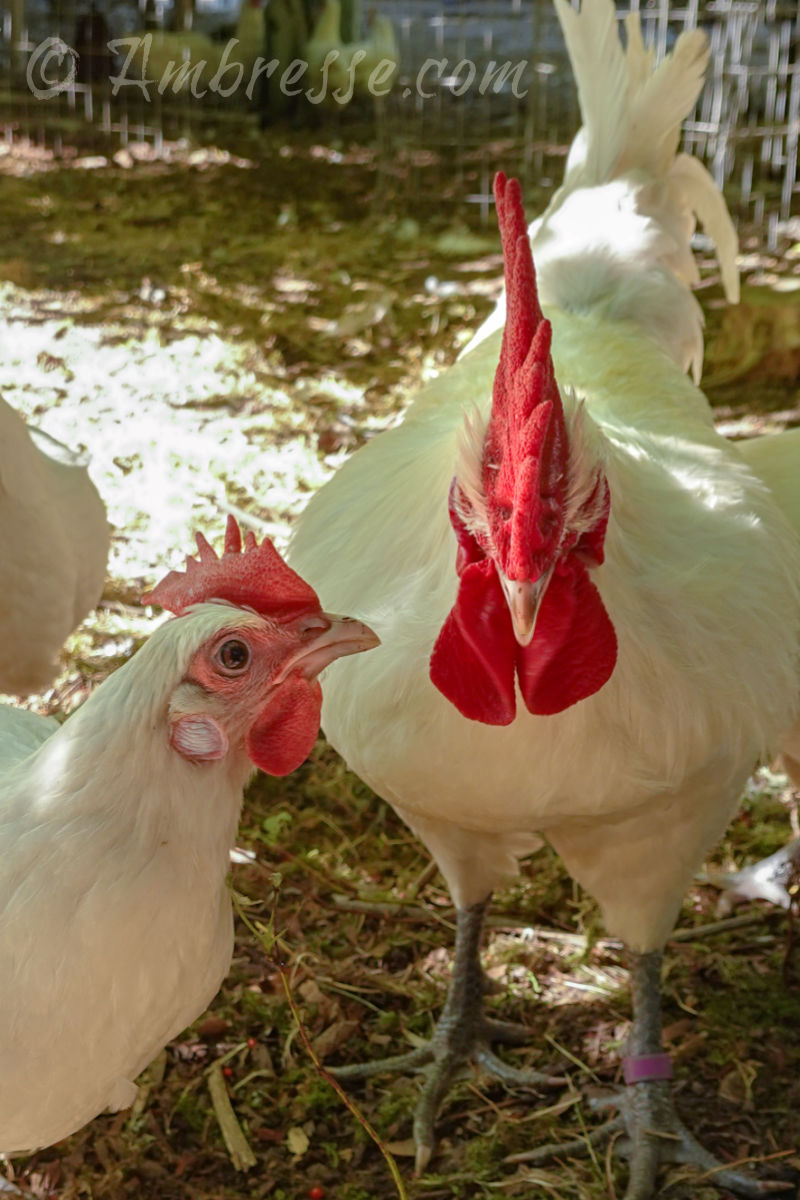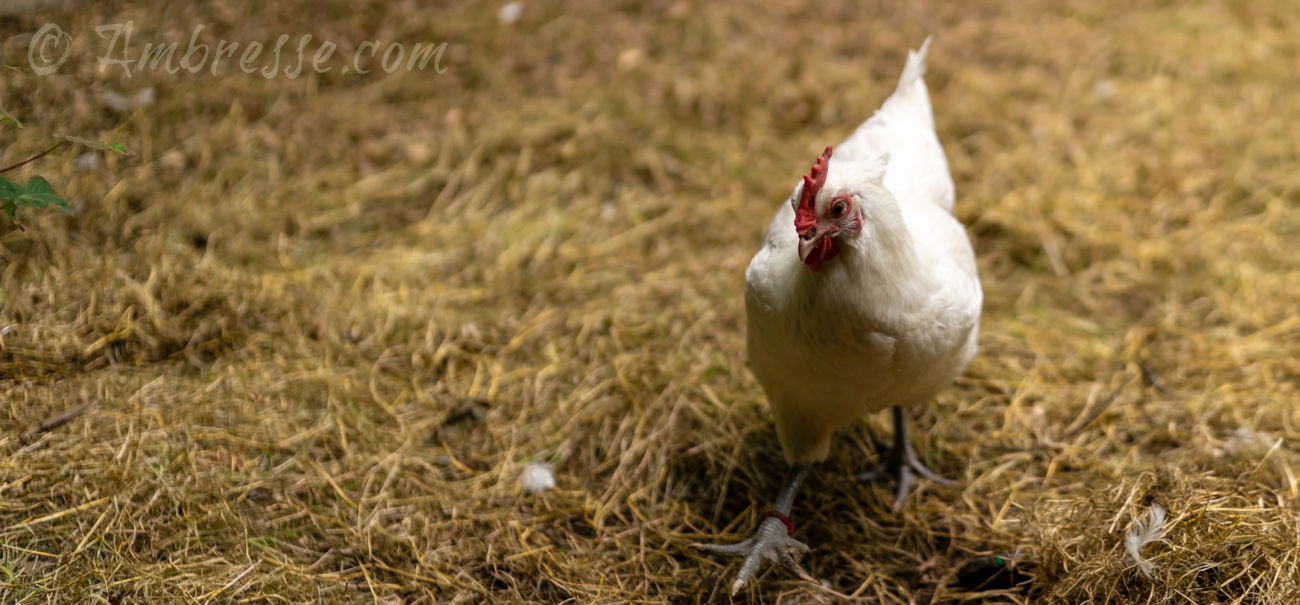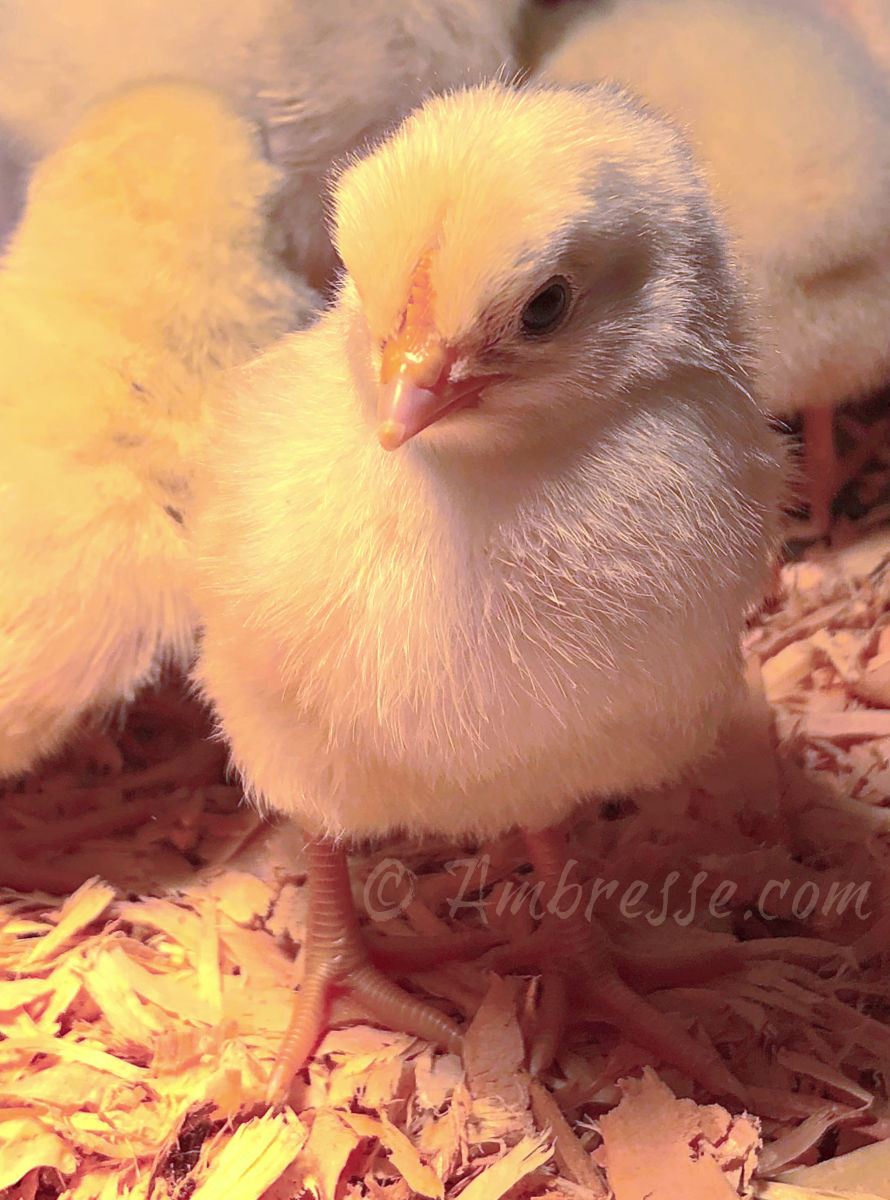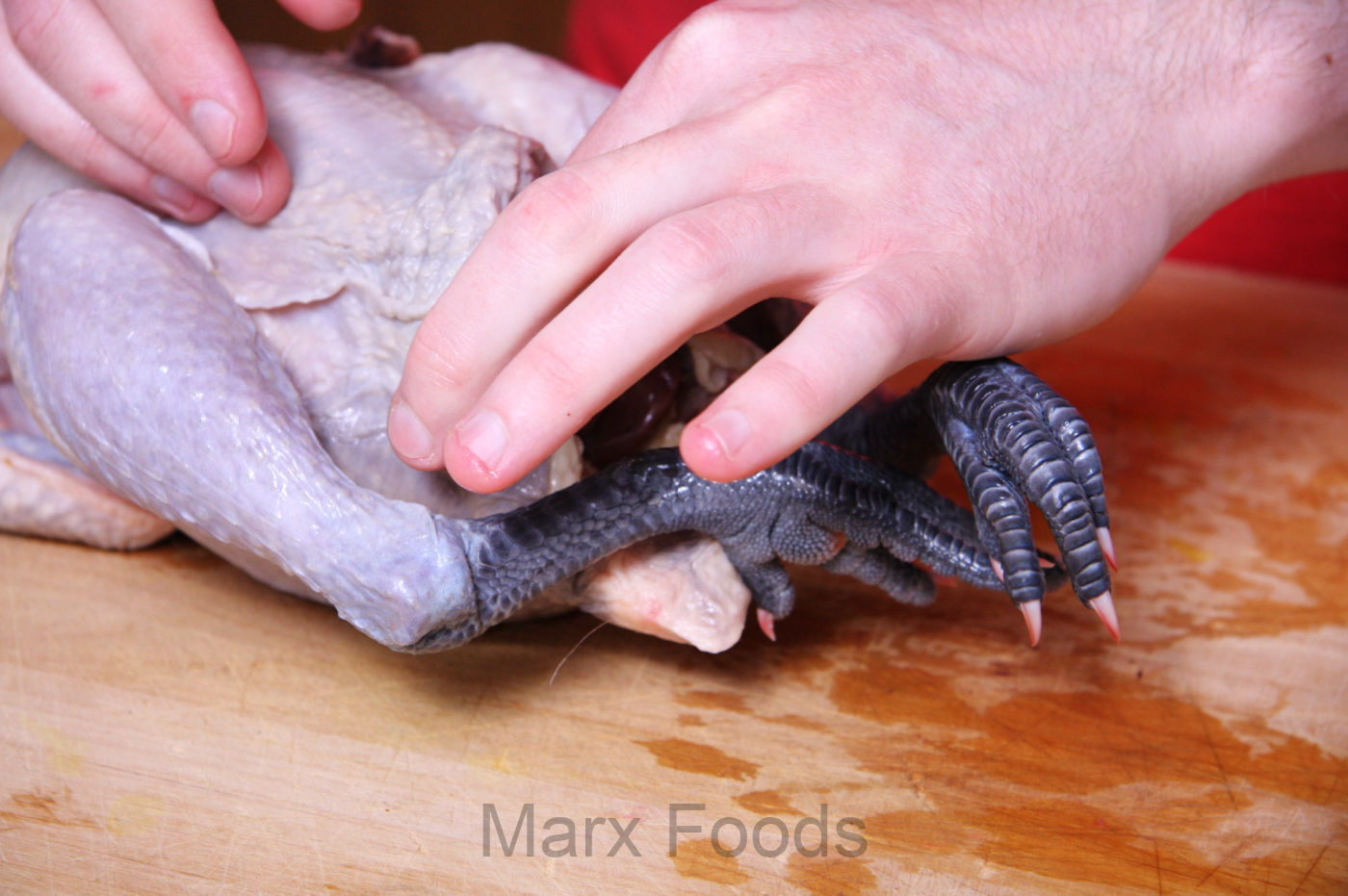The Blue Foot Chicken
Blue Foot Chickens: The history of an attempt to recreate the glorious French Bresse chicken in North America in order to fill a gourmet niche. French Bresse chickens are unavailable outside of France, and there were no American Bresse Chickens at the time, so, why not?
How do they compare??
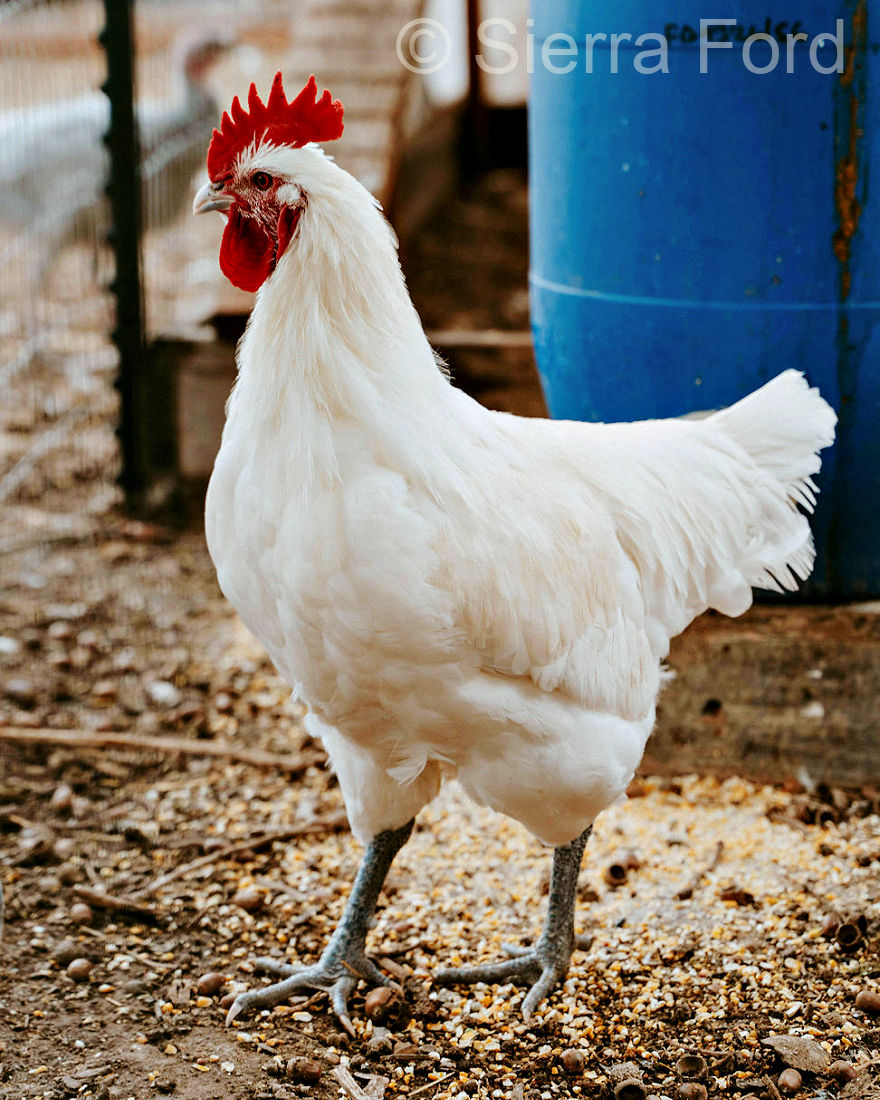 American Bresse cockerel looks nearly identical to Blue Foot chickens except being slightly larger.
Photo Credit: 3F Farms in Utah.
American Bresse cockerel looks nearly identical to Blue Foot chickens except being slightly larger.
Photo Credit: 3F Farms in Utah.The concept and history of the Blue Foot began in the late 1980s1. Cheap pheasants were flooding the market, raising fears among breeders of possible financial ramifications. Plus, a large processing plant overseen by "Squab Bob" Shipley of Modesto, California, a pigeon and pheasant breeder, sat idle for periods of time. Money could be made if it was better utilized. Brainstorming ensued.
Ariane Daugin, owner of D'Artagnan and marketer of exotic meats, contributed to the deliberations. She did business with Squab Bob, marketing his pigeon and pheasant products. If they could identify yet another exotic species that could be raised, processed during normally idle times, and then sold to the public...
Canadian poultry breeder Peter Thiessen, located near Abbotsford, British Columbia, Canada, was acquainted through business with both Shipley and Daugin.
It didn't take long at all for the conversation to drift to that world famous, incredibly delectable but legally protected French Bresse Chicken. Dollar signs hit their eyeballs as they began researching the idea of raising Bresse in the United States for the North American market. The idea was too promising to ignore. They schemed of ways to skirt the legalities, even smuggling (!!), if necessary, eggs into the United States.
The Elusive Bresse....
Ariane Daugin had already been trying to no avail to obtain French Bresse birds or eggs2. When normal channels failed, she tried, er, unconventional channels, including eggs tucked into her suitcases. As it turned out, Customs officials were vigilant. Considerably more vigilant than hoped.
She got nowhere with an appeal directly to Georges Blanc, President of the Bresse Poultry Interprofessional Committee3. Without his okay, there would be no Bresse leaving the shores of France, whether fowl, chicks, or eggs. Being a Michelin three-star chef and specialist in gourmet poulet de Bresse, Blanc took the legal Registered Designation of Origin status very seriously.
Begging and pleading for exceptions moved his stony heart not a whit.
Peter Thiessen had a connection in France with a sympathetic Bresse farmer, who sent some Bresse eggs, clearly marking the package as containing Bresse chicken eggs. These were destroyed after arrival in United States customs.
Creating a Blue Foot Chicken
If you can't obtain it, then re-create it, was Thiessen's conclusion. Of course. "Dad’s thing was always breeding birds, and he loved it when someone told him he couldn’t do something," stated son David4.
Peter Thiessen got to work in Mount Lehman, BC, in Canada's Fraser Valley. The selective breeding process, David says, involved the use of approximately seventeen chicken breeds and lineages. The list of the exact breeds are top secret. David only admits to the inclusion of a small Malaysian breed with blue legs, and a Rhode Island Red.
It doesn't actually take too long to distill a large collection of genes into a white bird with a large red comb and steel blue feet. It does take considerably more time to breed hybrid lines to other hybrid lines, continually refining the details to ensure inclusion of each typically Bresse trait, such as rapid growth, light bones, thin skin, and copious egg-laying.
But the elusive traits of fat-marbling and intense flavor are considerably more difficult to quantify. They may not be tied at all to a bird's actual genetic code, but instead may be a product of gene modifiers in its epigenome which affect the actions of genes without altering the genetic code5,6.
Epigenetics and the Epigenome
Epigenetics is the study of the multiple signals that influence the function of the body and that turn genes on and off, but which are not encoded in the actual genes.
According to Medlineplus.gov, epigenetics is: "The study of how cells control gene activity without changing the DNA sequence. 'Epi-' means 'on or above' in Greek, and 'epigenetic' describes factors beyond the genetic code. Epigenetic changes are modifications to DNA that regulate whether genes are turned on or off. These modifications are attached to DNA and do not change the sequence of DNA building blocks. Within the complete set of DNA in a cell (genome), all of the modifications that regulate the activity (expression) of the genes is known as the epigenome."
In addition to ensuring clean DNA with a minimal number of flawed characteristics, the poultryman or woman must also shape the modifying factors that are a part of the intangible epigenome. Shaping both the genome and the epigenome is done via selective breeding. But the length of time it takes to substantially affect the epigenome is undetermined - it depends on which factors are present at the outset, plus the skill of the breeder to augment the right modifiers and tease forth the desired epigenetic results.
The much bigger question becomes: How many years of selective breeding does it take to change the epigenetic code? How long before the brand new breed of chicken fully manifests the uniquely Bresse traits of fat-marbling and rich flavor?? Consider that it took a millennium of breeding in the Bresse Valley of France before Bresse chickens became a recognized and coveted breed (in 1591), and then later, highly prized as a gourmet product.
After eleven years of constant breeding, Mr. Thiessen was happy with the results, and began selling his product commercially in 2003. He called it the Mount Lehman Chicken, named after his town in British Columbia.
In 2004 he sold 600 birds to Squab Bob Shipley, who promptly slapped a new name on them: Blue Foot Chicken, or if you want to get fancy, Poulet Bleu, meaning blue chicken in French.
Blue Foot and Bresse: Twin Chickens
Blue Foot Chickens look "eerily similar" to American Bresse, according to Grade Eh Farms in BC Canada - white plumage, bright red combs and wattles, and steel blue legs. After all, they were exactly patterned after French Bresse poultry. They are, however, smaller in size than American Bresse, and also do not grow quite as quickly as do either the French or the American Bresse chicken.
There were no "American Bresse" until 2011, and in the earlier days, they too looked like French Bresse chickens, being directly related to them.
Blue Foots are slower to market by a week or two. American Bresse go to market at around 14-16 weeks after a two-week preparation process called finishing, while Poulet Bleu are typically processed at 16-17 weeks.
Both the Blue Foot and French Bresse birds comfortably feed two people.
The American Bresse working standard of perfection specifies a bird that is approximately 2 pounds heavier than its French counterpart, so that the American Bresse birds will be big enough to feed a family of four but not so big as to slow down the fantastic rate of egg laying.
Blue Foot Chicken vs. Bresse
If ultra flavor and fat-marbling is absent to start with, all the breeding in the world will not add the taste and fat-marbling traits suddenly into the gene pool. At the very least, not overnight.
According to the Backyard Poultry website: "The genetics of the Bresse are essential. You can't create a white-skinned white bird with red wattles and comb, and blue legs, and call it a Bresse, no matter where it is raised. (This HAS been tried in the past with unscrupulous individuals!) If the specific body characteristics and taste and fat-mottling traits are missing, the bird is nothing more than a white chicken that tastes like chicken."7
The folks at Greenfire Farms agree. "Bresse belong to a genetically distinct chicken breed that metabolize feed in a certain way, distribute certain types of muscle across their frames in a certain pattern and at certain rates, and produce meat with a unique and distinct flavor. Bresse are known to have unusually light bones and thin skin. These many physical differences flow from the singular genetics of Bresse. More than a half-millennium of breed selection has produced a Bresse that cannot be replicated by simply crossing other unrelated breeds of chickens to create a Bresse facsimile."8
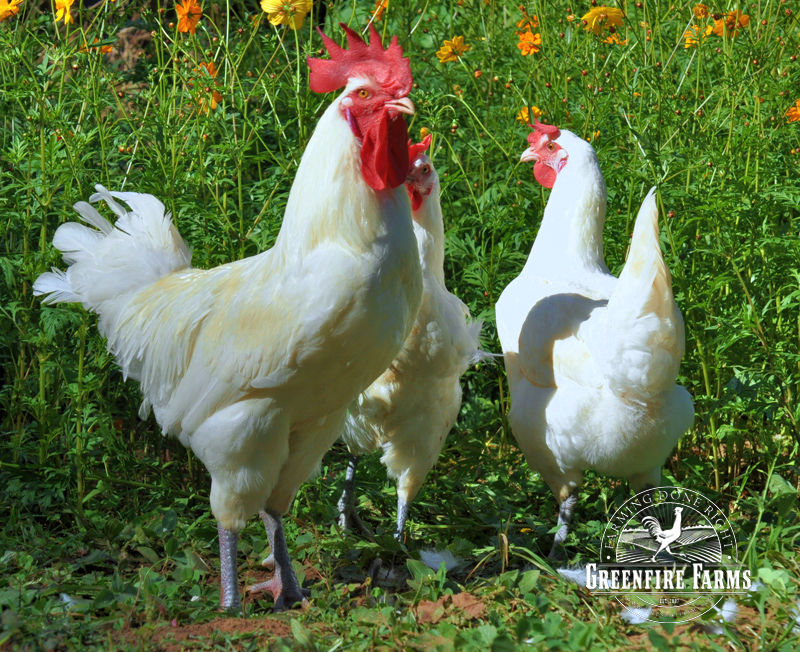 An American Bresse trio from Greenfire Farms, original importers of French Bresse chickens to the United States. Photo Credit: Greenfire Farms in Florida. Photo used with permission.
An American Bresse trio from Greenfire Farms, original importers of French Bresse chickens to the United States. Photo Credit: Greenfire Farms in Florida. Photo used with permission.Taste Comparisons
"For the record, most connoisseurs of high end gourmet chicken clearly prefer Bresse over Blue Foot," states Hank Shaw in his 2008 article, "Kind of Blue: Modesto's Champion Chicken."
I don't know if it is the thin and crispy skin of an American Bresse cooked to perfection, the uniquely fat-infused meat, including its rich flavor, but those who have eaten meals of both American Bresse and Blue Foot Chicken seem to recognize an entrancing 'it' factor that lifts the American Bresse a notch above any other chicken, including the Blue Foot chicken. Bresse is, after all, described as "the queen of chicken and the chicken of kings."
If the Blue Foot doesn't seem to measure up to the full flavor of the French Bresse, they are certainly much closer to it than the standard, almost bland, Cornish cross chicken, which represent nearly 99% of all chicken commercially sold in North America - 160 billion birds sold per week in the USA alone4.
But Wait: A Taste Test Caveat
Sometime after his purchase of Blue Foot chickens from Peter Thiessen in 2004, Shipley's operation suffered a taste-killing catastrophe because he had begun tinkering with the tried and true genetics of the Blue Foot. In his attempt to get birds to put on fat faster, he completely lost the genetics, or epigenetics, that produced the rich taste and texture of the Blue Foot meat coveted by high-end chefs4.
They became nothing more than white birds that tasted like chicken. Tragically, he had saved no back-up birds from which to start breeding afresh. This begs the question:
How many connoisseurs of high end gourmet chicken were actually comparing exquisite poulet de Bresse to later-bred, watered-down Blue Foot chickens?
Shipley's customers walked away. The operation closed down and -- theoretically -- every Blue Foot of Shipley's was processed or euthanized.
News on the street, however, was that instead of being completely euthanized, a few crates of failed Blue Foot chickens were sold in secret to an outfit in the Sacramento, CA, area4. The trail went cold, but as of 2022 at least, so-called "Blue Foot Chickens" have turned up at a ranch in Perris, California and are marketed online at exorbitant prices at Exoticmeatmarkets [dot] com9.
The Blue Foot Chicken Today
Blue Foot Chickens are still available, but not through the original team of Shipley, Daugin, or even Thiessen.
After selling a large part of his flock to Shipley and after the rest of his flock was euthanized due to avian flu, Peter Thiessen completely rebuilt a brand new flock of Blue Foot chickens from scratch using the same 17 breeds. Prior experience cut the development time to just 7 years.
In August of 2014, he shook hands on a deal to sell the flock to poultryman Bernie Nash of Mad Hatcher Poultry in Ephrata, Washington. A few weeks later, at age 70, Thiessen passed away.
Nash acquired the entirety of this second flock from Thiessen's son David. He now holds the exclusive worldwide rights to the production and sale of Blue Foot Chickens10, which he markets under the same two interchangeable names as did Shipley: Poulet Bleu, and Blue Foot Chicken.
Today the breed is thriving, thanks to Bernie Nash and his team, who have dialed in a feeding program that satisfies their standard for exquisite taste and succulence.
I am still unsure exactly how the current Poulet Bleu measures up against the renowned poulet de Bresse (my guess favors the Bresse).
But I DO know that top-end chefs in restaurants across North America are doing themselves proud by serving Poulet Bleu to a welcoming public.
Below: Photo of raw Blue Foot chicken is dated February 18, 2009. Credit: Marx Foods. Creative Commons License (CC BY-NC-SA 4.0).
How to Obtain Blue Foot Chicken
In his 2005 New York Post article titled "My Blue Heaven - Tastes Like Chicken? Hardly, if It's an Exotic Blue,"11 writer Steve Cuozzo raves about the succulence of the "blue footer" meals he enjoyed in New York City. There was absolutely no regret at being separated from $42 for his meal at Carlyle's (before tax and tip).
Are you interested in dining on Blue Foot Chicken? You may be in luck! Perhaps a fine restaurant near you offers Blue Foot Chicken on their menu.
Foods in Season, located in Camas, Washington, is the exclusive purveyor of Blue Foot chicken products (2022). They sell almost exclusively to chefs and high-end restaurants. If you'd like to obtain raw or frozen Blue Foot Chicken for your own use, inquire with Foods in Season.
Foods in Season
Phone: +1 (866) 767 - 2464 (toll free)
Email: Info @ foodsinseason. com
To Purchase, email: salesteam @ foodsinseason. com
Website: https://www.foodsinseason.com/fis-product
- Price per pound was $15.55 in 2022
- Each chicken weighs approximately 3 pounds after processing.
- Must purchase a minimum of 10 pounds
If you think you may like to raise them, well, you'll have to take that up with Bernie Nash who, it appears, is guarding his enterprise almost as securely as do the French. Direct any questions regarding Mad Hatcher Poultry to: jon @ pouletbleu. com.
- Home
- Blue Foot Chicken
References
- https://web.archive.org/web/20130225062459/http://www.ediblecommunities.com/sacramento/fall-2008/kind-of-blue-modestos-champion-chicken-by-hank-shaw.htm
- https://nymag.com/nymetro/food/features/14787/
- Interprofessional Committee of Bresse Poultry (CIVB: Comité Interprofessionnel de la Volaille de Bresse) is the organization that monitors and protects the Bresse AOC. Chef Georges Blanc was and still is the Chairman of the organization.
- https://static1.squarespace.com/static/5435f1fae4b09dbd92eb3705/t/603ff69fc309b43275db0846/1614804657511/Joe+Ray+-+PB+Article.pdf
- https://medlineplus.gov/genetics/understanding/howgeneswork/epigenome/
- https://medlineplus.gov/genetics/understanding/howgeneswork/geneonoff/
- https://backyardpoultry.iamcountryside.com/chickens-101/bresse-chicken-breed-profile/
- https://greenfirefarms.com/american_bresse.html
- https://www.exoticmeatmarkets.com/Blue-Foot-Chicken-from-Exotic-Meat-Market-s/271.htm
- http://www.pouletbleu.com/history
- https://nypost.com/2005/11/02/my-blue-heaven-tastes-like-chicken-hardly-if-its-an-exotic-blue/
Overheard...
Tasty Recipe! "I processed my first batch of Bresse... Today I roasted one according (somewhat) to the recipe posted on Ambresse. It was delicious! Tender, moist and succulent... So happy I chose this breed!" (B.E., MN, 12/11/2024).
Success: "I can't believe all the inquiries we get through your website. And it's been a great resource to send people to who are interested in the (AB) breed" (Utangard Farm, NH, 5/5/2025).
Informational: "Your site has the first accurate information about American Bresse chickens that I have seen in English. Thanks for your diligent work" (L. Wooton, NC, 12/17/2024).
Translate This Page
Traduire Cette Page
Traduzca Esta Pagina

News
American Bresse Breed Club web pages can be found under the Breed Club tab on the navigation bar. Any changes in Club status will be posted here!
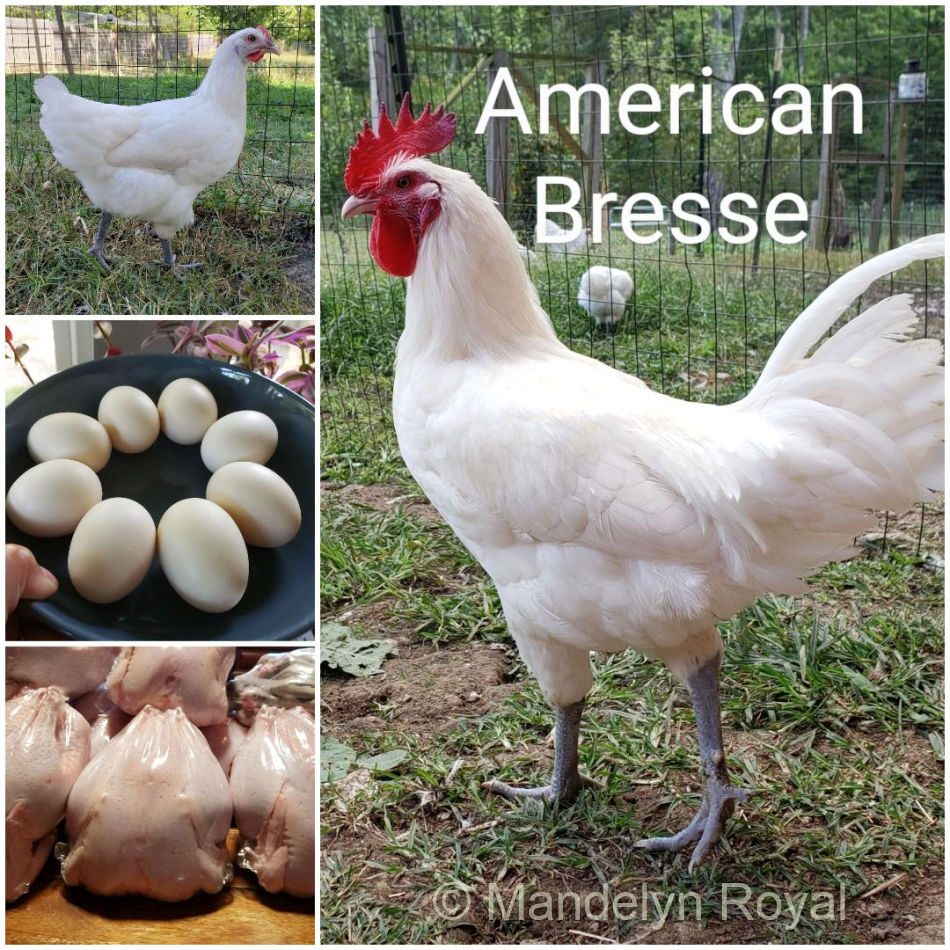
Photo credit: Mandelyn Royal.
